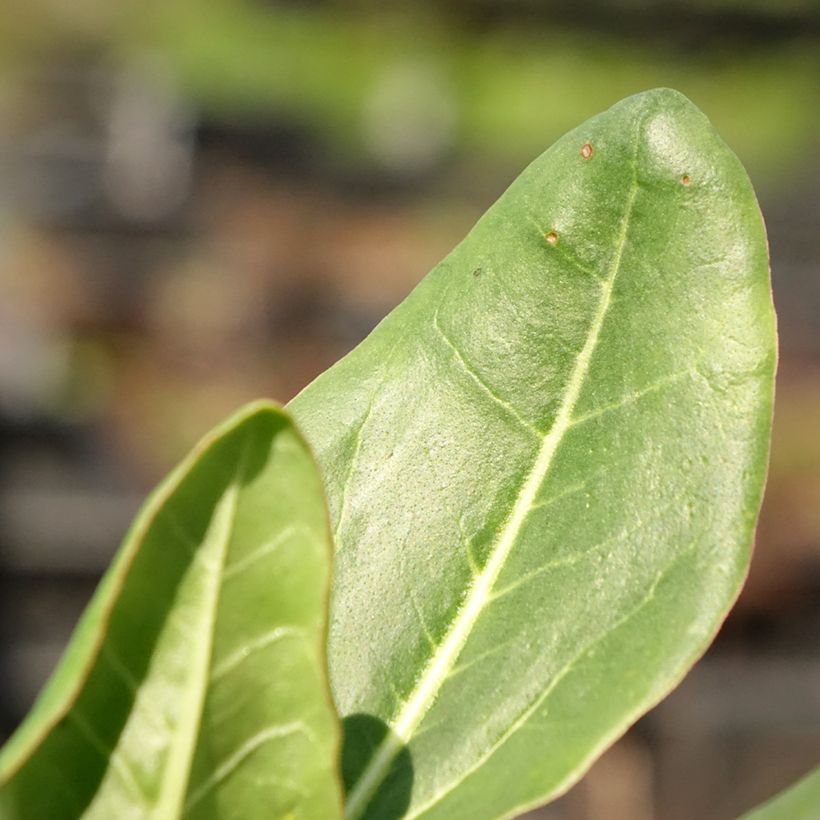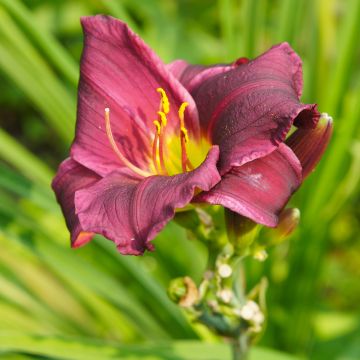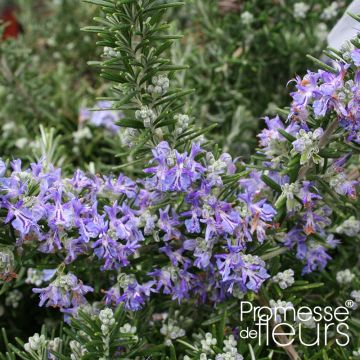

Rheum alexandrae - Alexander's Rhubarb


Rheum alexandrae - Alexander's Rhubarb


Rheum alexandrae - Alexander's Rhubarb
Rheum alexandrae - Alexander's Rhubarb
Rheum alexandrae
Alexander's Rhubarb
I am hesitant about the comment I have to leave. The plants languish in the first year after planting, probably a biennial? This is not obvious from the description, I am waiting for the rosette for next year...
Benou, 20/09/2024
Special offer!
Receive a €20 voucher for any order over €90 (excluding delivery costs, credit notes, and plastic-free options)!
1- Add your favorite plants to your cart.
2- Once you have reached €90, confirm your order (you can even choose the delivery date!).
3- As soon as your order is shipped, you will receive an email containing your voucher code, valid for 3 months (90 days).
Your voucher is unique and can only be used once, for any order with a minimum value of €20, excluding delivery costs.
Can be combined with other current offers, non-divisible and non-refundable.
Home or relay delivery (depending on size and destination)
Schedule delivery date,
and select date in basket
This plant carries a 12 months recovery warranty
More information
We guarantee the quality of our plants for a full growing cycle, and will replace at our expense any plant that fails to recover under normal climatic and planting conditions.
Would this plant suit my garden?
Set up your Plantfit profile →
Description
The Rheum alexandrae, also known as Alexandra's Rhubarb, is a Tibetan cousin of our native rhubarb, but easy to acclimatize in our gardens if it has a humus-rich soil that remains moist throughout the year. From a rosette of green leaves veined with white emerges a spectacular inflorescence in summer, resembling a vegetal tower, covered with beautiful bracts in a pale greenish cream color, overlapping each other and reaching the size of a hand. In autumn, the foliage is painted with shades of fire and the bracts with red streaks, creating a stunning effect. Place this botanical curiosity near a pond, a stream, or in a constantly fresh large rockery.
The Rheum alexandrae, from the Polygonaceae family, is native to the Himalayan region of Asia. It is found specifically on alpine banks in Tibet, western and southern China, where it always grows near watercourses, in marshy areas, or sometimes on very wet slopes or between damp rocks, between 3000 and 4600 meters (9842 and 15092 feet) above sea level. This rhubarb has a relatively slow growth. It dislikes summer heat like most high mountain plants. On the other hand, it has good hardiness under a thick snow cover or under protective mulch.
It is a perennial plant with a deep rhizome that develops a rosette of modest-sized leaves for a rhubarb from spring onwards. At maturity, the rosette will not exceed 30-40 cm (12-16in) in height. The leaves, which are oval to elliptical in shape, sometimes pleated, are 9 to 14 cm (4 to 6in) long and 6.5 to 9 cm (3 to 4in) wide. They are carried by a petiole 10 to 14 cm (4 to 6in) long, initially upright and later drooping. The lamina is pale green and traversed by 3 or 4 clearly visible white veins. Flowering occurs in June-July and is highly ornamental for 2 to 3 months. Floral stems emerge from the leaf tuft, standing from 90 cm (35in) up to 1.50 m (5ft) above the ground depending on the growing conditions. Each floral stem is a panicle of tiny flowers hidden under large pendulous bracts in a pale greenish cream color, arranged like tiles, with decreasing size from bottom to top. With a parchment-like texture, they remain decorative for a long time and become streaked with red towards the end of the season. The fruits (trigonous and winged achenes) will ripen 2 months after the start of flowering. The foliage, before disappearing, also takes on beautiful copper-orange colors.
In addition to their well-known culinary qualities, rhubarbs are also key elements for the ornamentation of a colorful flower bed, an exotic garden, or even an ornamental vegetable garden. The Alexander rhubarb appreciates humus-rich, non-calcareous, loose, deep, and moist soils. Therefore, it will naturally find its place in a mountain garden (or in a cool climate), not far from a water source that will guarantee its constant freshness. It is a spectacular perennial plant during flowering, to be highlighted alongside Primula bulleyana or candelabra primroses. Place it at the back of a flower bed or against the south or west wall of a house. Its exotic, if not strange, appearance blends very well with polygonums, hostas, and carex.
Report an error about the product description
Rheum alexandrae - Alexander's Rhubarb in pictures






Flowering
Foliage
Plant habit
Botanical data
Rheum
alexandrae
Polygonaceae
Alexander's Rhubarb
Himalayas
Other Perennials A to Z
View all →Planting and care
Plant the Rheum alexandrae in full sun or partial shade, in a humus-rich garden soil that is always moist. This rhubarb appreciates wet and permanently damp areas and dislikes hot summers. It prefers slightly acidic soils. It tolerates clay or marshy soils well. In poor (peaty) soil, its growth will be less significant. Plant the rootstock deeply, at a depth of 20 cm (8in) below the surface of the soil. Mulch the stump in winter as a precaution (the plant can withstand heavy frosts but in well-drained soil or protected by snow), but also in summer to retain moisture. Prune the foliage in autumn. The plant does not go into dormancy until the first frosts. The foliage is susceptible to rust: avoid watering it in summer and treat preventively.
Planting period
Intended location
Care
-
, onOrder confirmed
Reply from on Promesse de fleurs
Similar products
Haven't found what you were looking for?
Hardiness is the lowest winter temperature a plant can endure without suffering serious damage or even dying. However, hardiness is affected by location (a sheltered area, such as a patio), protection (winter cover) and soil type (hardiness is improved by well-drained soil).

Photo Sharing Terms & Conditions
In order to encourage gardeners to interact and share their experiences, Promesse de fleurs offers various media enabling content to be uploaded onto its Site - in particular via the ‘Photo sharing’ module.
The User agrees to refrain from:
- Posting any content that is illegal, prejudicial, insulting, racist, inciteful to hatred, revisionist, contrary to public decency, that infringes on privacy or on the privacy rights of third parties, in particular the publicity rights of persons and goods, intellectual property rights, or the right to privacy.
- Submitting content on behalf of a third party;
- Impersonate the identity of a third party and/or publish any personal information about a third party;
In general, the User undertakes to refrain from any unethical behaviour.
All Content (in particular text, comments, files, images, photos, videos, creative works, etc.), which may be subject to property or intellectual property rights, image or other private rights, shall remain the property of the User, subject to the limited rights granted by the terms of the licence granted by Promesse de fleurs as stated below. Users are at liberty to publish or not to publish such Content on the Site, notably via the ‘Photo Sharing’ facility, and accept that this Content shall be made public and freely accessible, notably on the Internet.
Users further acknowledge, undertake to have ,and guarantee that they hold all necessary rights and permissions to publish such material on the Site, in particular with regard to the legislation in force pertaining to any privacy, property, intellectual property, image, or contractual rights, or rights of any other nature. By publishing such Content on the Site, Users acknowledge accepting full liability as publishers of the Content within the meaning of the law, and grant Promesse de fleurs, free of charge, an inclusive, worldwide licence for the said Content for the entire duration of its publication, including all reproduction, representation, up/downloading, displaying, performing, transmission, and storage rights.
Users also grant permission for their name to be linked to the Content and accept that this link may not always be made available.
By engaging in posting material, Users consent to their Content becoming automatically accessible on the Internet, in particular on other sites and/or blogs and/or web pages of the Promesse de fleurs site, including in particular social pages and the Promesse de fleurs catalogue.
Users may secure the removal of entrusted content free of charge by issuing a simple request via our contact form.
The flowering period indicated on our website applies to countries and regions located in USDA zone 8 (France, the United Kingdom, Ireland, the Netherlands, etc.)
It will vary according to where you live:
- In zones 9 to 10 (Italy, Spain, Greece, etc.), flowering will occur about 2 to 4 weeks earlier.
- In zones 6 to 7 (Germany, Poland, Slovenia, and lower mountainous regions), flowering will be delayed by 2 to 3 weeks.
- In zone 5 (Central Europe, Scandinavia), blooming will be delayed by 3 to 5 weeks.
In temperate climates, pruning of spring-flowering shrubs (forsythia, spireas, etc.) should be done just after flowering.
Pruning of summer-flowering shrubs (Indian Lilac, Perovskia, etc.) can be done in winter or spring.
In cold regions as well as with frost-sensitive plants, avoid pruning too early when severe frosts may still occur.
The planting period indicated on our website applies to countries and regions located in USDA zone 8 (France, United Kingdom, Ireland, Netherlands).
It will vary according to where you live:
- In Mediterranean zones (Marseille, Madrid, Milan, etc.), autumn and winter are the best planting periods.
- In continental zones (Strasbourg, Munich, Vienna, etc.), delay planting by 2 to 3 weeks in spring and bring it forward by 2 to 4 weeks in autumn.
- In mountainous regions (the Alps, Pyrenees, Carpathians, etc.), it is best to plant in late spring (May-June) or late summer (August-September).
The harvesting period indicated on our website applies to countries and regions in USDA zone 8 (France, England, Ireland, the Netherlands).
In colder areas (Scandinavia, Poland, Austria...) fruit and vegetable harvests are likely to be delayed by 3-4 weeks.
In warmer areas (Italy, Spain, Greece, etc.), harvesting will probably take place earlier, depending on weather conditions.
The sowing periods indicated on our website apply to countries and regions within USDA Zone 8 (France, UK, Ireland, Netherlands).
In colder areas (Scandinavia, Poland, Austria...), delay any outdoor sowing by 3-4 weeks, or sow under glass.
In warmer climes (Italy, Spain, Greece, etc.), bring outdoor sowing forward by a few weeks.



















































